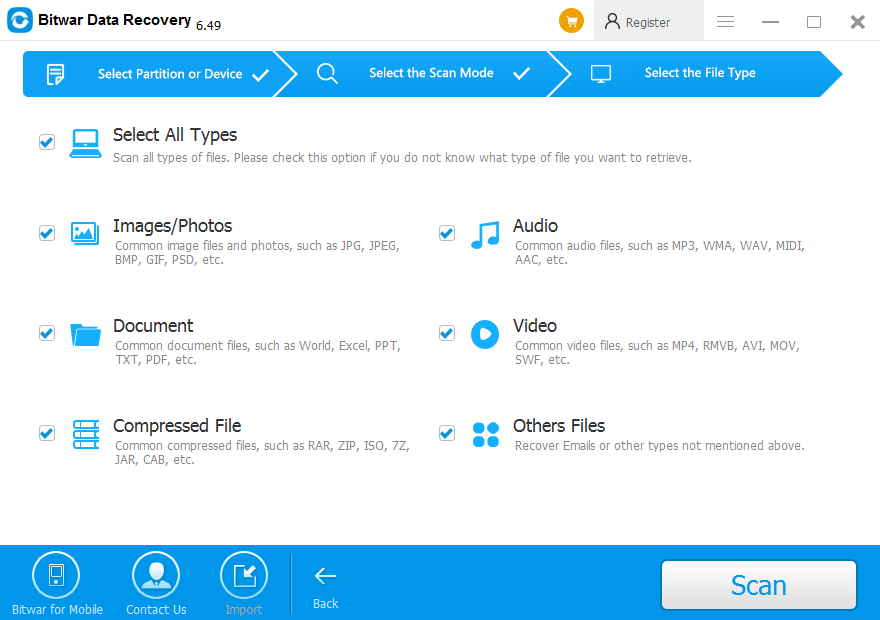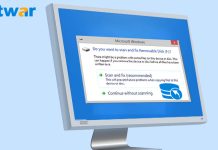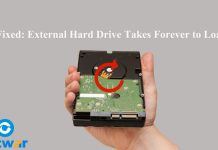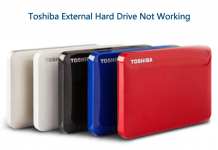Summary: This article will introduce some of the best solutions to overcome the “Folder shows empty, but files are there” issue and recover all your important data using Bitwar Data Recovery Software on Windows 7/8/10.
Imagine a scenario when you try to open an external drive or USB on Windows, but it says that ‘Folder is empty, there is no data in there.’ Despite having all the data, the Windows computer still warns you with this message.
It is not an unusual situation faced by Windows users, but it can be a troublesome issue when the device contains data which are essential and crucial for the user.

Nevertheless, there are many useful methods provided by the article below to fix the issue while introducing the simple steps to recover all your essential data by using the best free data recovery software to prevent permanent data loss.
Table of Contents
Why the Issue Occurs on Windows?
This issue can happen when there is a presence of a hidden attribute, which implies that you have some hidden files and folder which cannot be seen in the folder, and as a result, the “Folder shows empty, but files are there” issue happens.
The possible causes of this issue are:
- Virus and Malware.
- Improper way of removing storage device.
- Corrupted hard drive or file system.
- Physically damaged storage device etc.
Recover Data with Best Data Recovery Tool
After understanding the causes of the issue, users should be more careful while handling the file and folder. Besides, users may lose their data when fixing the “Folder shows empty, but files are there” issue on Windows 7/8/10.
So before proceeding to the solutions, users should recover all the crucial data first by using the Bitwar Data Recovery Software to prevent permanent data loss along the way!
Steps to Restore Data Using Bitwar Data Recovery Software:
Step 1: Download the recovery software according to your system.
Download for PC Download for Mac
Step 2: Connect the external storage device to your computer and launch the recovery software, followed by selecting the option USB/Memory Card Recovery.
Step 3: Now, click on the SD Card/Drive from where you want to recover data and then click on the Next button.
Step 4: After this, select the File Type that you wish to recover, followed by clicking on the Next button.
Step 5: Preview the data selected by you to be recovered and click on the Recover button to start recovery.
IMPORTANT NOTE: Once Recovery is completed, please SAVE your data at a new location instead of the old location to avoid Data Overwritten!
Practical Solutions to Fix “Folder Shows Empty but Files Are There” Issue
Solution 1: File Explorer
Step 1: Go to File Explorer and select File from the upper left corner.
Step 2: Now, select Change folders and Search options.
Step 3: After this, go to the View tab and enable Show hidden files, folders, and drives, followed by clicking on the Apply and OK button to save changes.
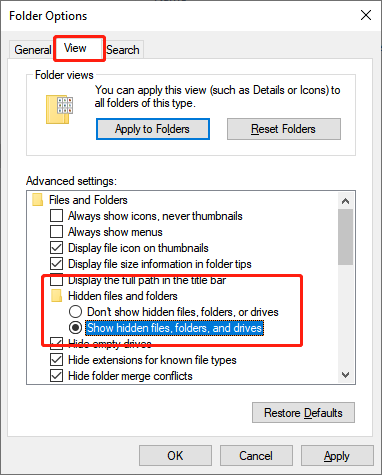
Solution 2: Command Prompt
Step 1: Open the Run box on PC by pressing Windows+R key.
Step 2: Now, type cmd in the Run box, followed by pressing Enter to open the Command Prompt.
Step 3: After this, if your drive is F, then type in f: with the command below and press Enter to execute.
attrib -h -r -s /s /d F:\*.*
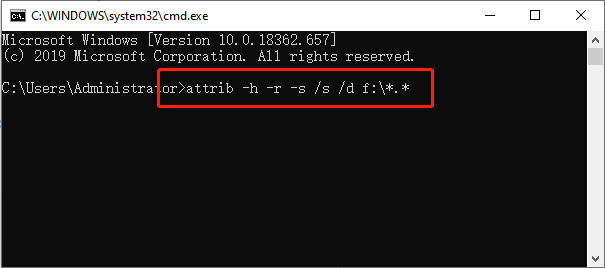
Step 4: Finally, exit the Command Prompt and Open Drive again to check whether the data is there or not.
Solution 3: Check the Drive for Errors
Step 1: Launch the File Explorer.
Step 2: Expand the This PC option and right-click on the partition that says that the folder is empty.
Step 3: Now, select Properties and skip to the Tools tab.
Step 4: After this, check the Error-checking box, followed by Scanning the partition and Repair errors.
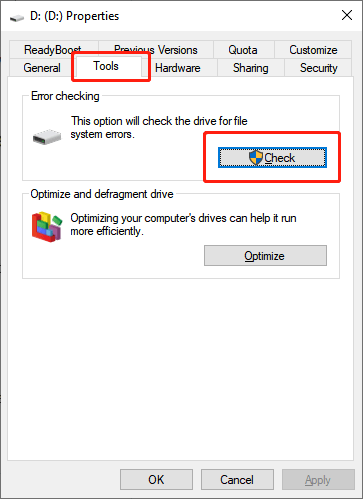
After error checking, open the file explorer and check whether the issue of the folder is empty, there is no data in there is fixed and you can view your data or not.
Solution 4: Troubleshoot Hardware and Device
Troubleshoot is a built-in Windows utility that is used to repair common computer issues. It detects hardware changes and works to fix related hardware issues.
So for us to open the troubleshooting utility for hardware and devices, we have to open it through command prompt with the steps given below:
Step 1: Open Run window by pressing Window + R key.
Step 2: Then, type in cmd and press, OK.
Step 3: Now, type in the command below and press Enter.
msdt.exe -id DeviceDiagnostic
Step 4: At last, the Hardware and Devices window will appear and click Next to continue the troubleshooting.
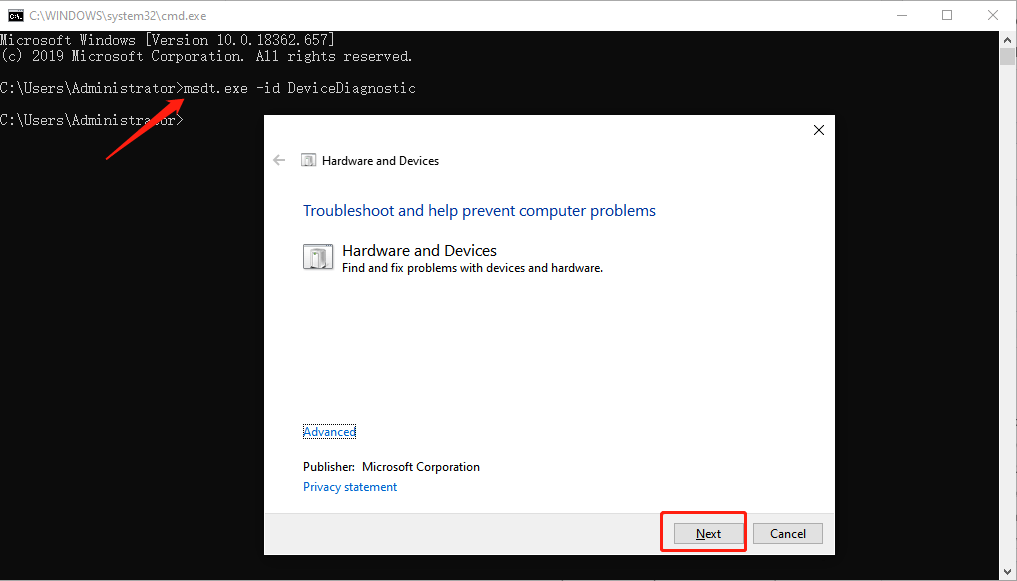
Solution 5: By Updating or Installing the Drivers
An outdated driver could be a reason for the external device connected to your system not to work correctly. In such a case, update the outdated drivers and make the storage device work the way it is supposed to work.
Method 1: Update Drivers
Step 1: Press Windows+X keys to select Device Manager from the pop-up menu.
Step 2: From there, extend Disk drivers/Universal Serial Bus controllers directory and then one by one Right-click on these drivers to update them.
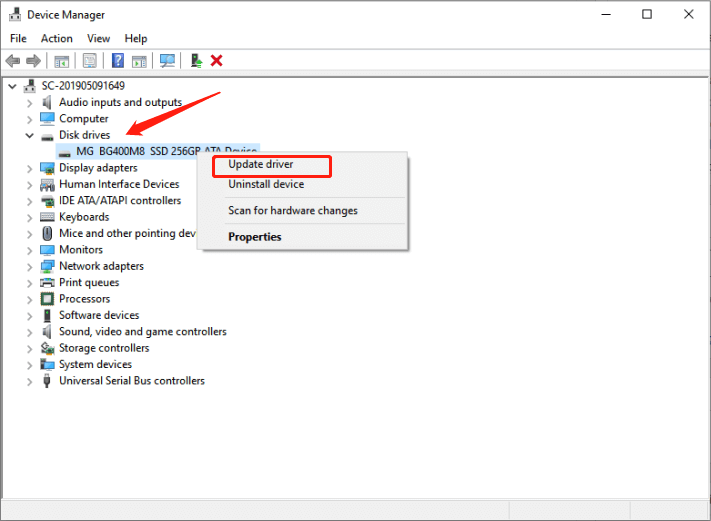
Step 3: Now, choose the option Search automatically for updated driver software from the pop-up window.
Method 2: Install New Driver
Step 1: Look for a suitable driver from the website of your device manufacturer and Start downloading it.
Step 2: Uninstall the old drivers and then open the new driver’s folder to install them by double-clicking on the setup file.
Once these drivers are installed, check whether your problem is resolved or not.
That’s How to Fix It!
The “Folder shows empty, but files are there” issue can put a number of your tasks and activities into a halt by restricting you from accessing all of your data. There are several reasons associated with causing this issue, such as viruses, malware, and outdated drivers, etc. However, this issue can be sorted out quickly by performing the solutions given above.
We suggest applying all the solutions above one by one. In case, any of the methods are not working, then retrieve all your relevant data using the best data recovery software: Bitwar Data Recovery to restore every bit of your lost data. It is 100% clean and supports full data recovery from any storage device.


